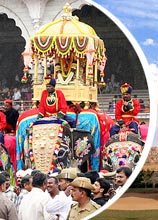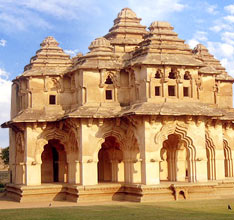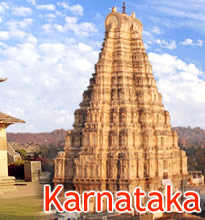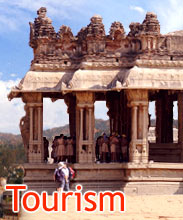 The
city of Bidar rose to prominence when it became the Bahmani capital
during the reign of Ahmad Shah Bahman (1423-1436 A.D) in 1429. Ahmed
Shah was awestruck by the scenic beauty and climate of the place and he
decided to build a new city near its ancient fortress and called it
Ahmadabad-Bidar. Ahmad Shah also laid the foundations of the Bidar fort.
The
city of Bidar rose to prominence when it became the Bahmani capital
during the reign of Ahmad Shah Bahman (1423-1436 A.D) in 1429. Ahmed
Shah was awestruck by the scenic beauty and climate of the place and he
decided to build a new city near its ancient fortress and called it
Ahmadabad-Bidar. Ahmad Shah also laid the foundations of the Bidar fort. When the Bahmani dynasty eventually collapsed in 1538, the sultanate broke up into five independent sultanates, known as the Deccan sultanates. Bidar became a part of the Barid Shahi dynasty. In 1543 Ali Barid assumed royal appellation of Shah. The Bidar Sultanate was absorbed by the Bijapur Sultanate to the west in 1619, which was in turn conquered by the Mughal emperor Aurangzeb in 1686.
From 1724 to 1948, Bidar remained a territory of the Nizam of Hyderabad's dominions. It became a part of the erstwhile Hyderabad state, when Hyderabad was annexed to India. In 1956, Hyderabad was partitioned along linguistic lines and Bidar district became part of Mysore state, later renamed Karnataka. Travel to Bidar and soak in the history of this ancient capital. Over the years Bidar tourism has increased by leaps and bounds.









